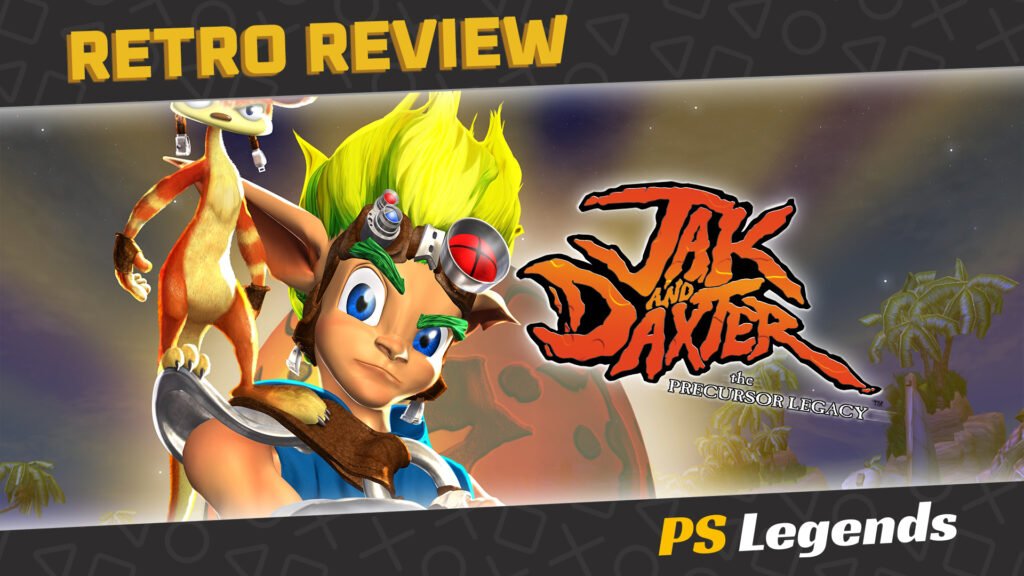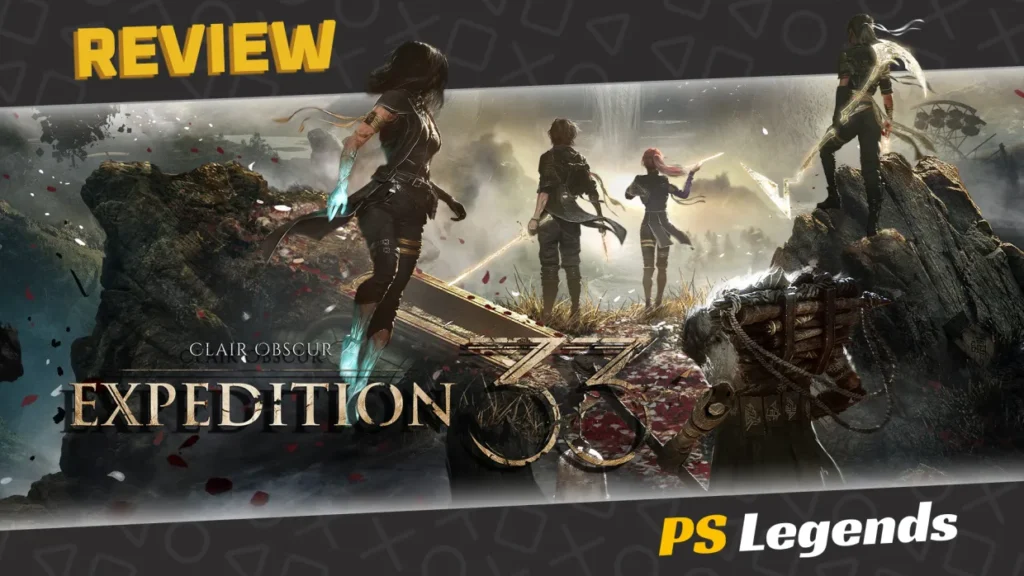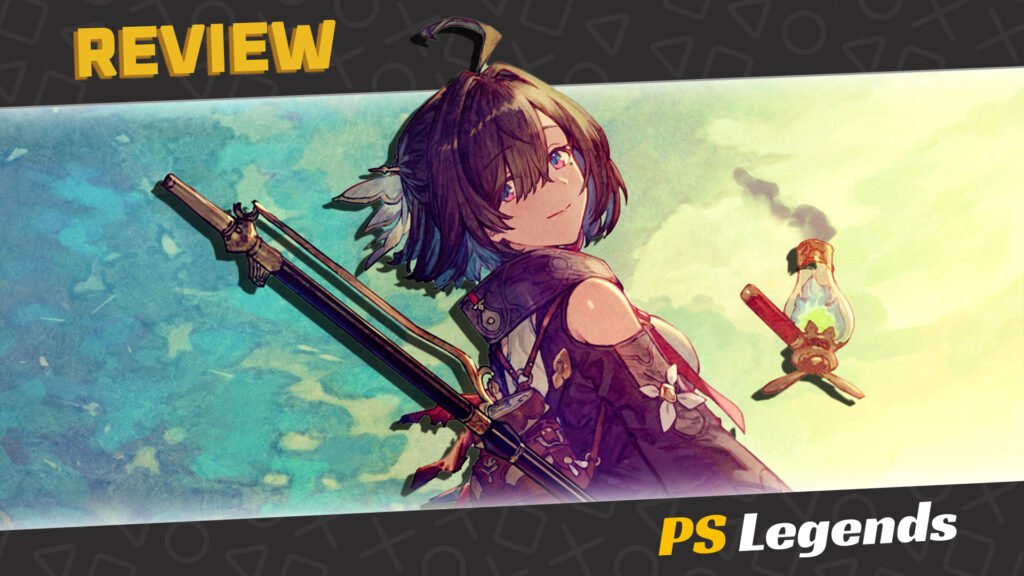Jak and Daxter is a game I have some history with, which is why I’ve chosen to revisit it, salvage my old notes from years ago and create a comprehensive review. It’s the least I can do to honour the memory of this outstanding game; a game I’ve had the pleasure of revisiting several times over the years. You see, the PS3 remaster of Jak and Daxter was, in fact, my very first platinum trophy ever, but first, let’s reacquaint ourselves with the original PS2 masterpiece.
While most 18-year-olds out for a weekend of heavy drinking in Edinburgh are usually prioritising nursing their hangovers in between a bit of sightseeing, I had other things in mind. Slipping away to the high street with a couple of confused mates to grab Naughty Dog’s semi-open-world platforming marvel on its launch weekend wasn’t terribly well-received by lads who were desperately hoping their precious Dreamcasts would cling to life. No shame in admitting defeat, fellas.
On This Page
Introduction
Jak and Daxter: The Precursor Legacy is a 2001 3D platform game developed by Naughty Dog and published by Sony Computer Entertainment for the PlayStation 2 on December 4th, 2001, as the first game of the Jak and Daxter series. The game follows the protagonists, a teenage boy named Jak, as he tries to help his friend Daxter after he is transformed into an “ottsel”, a fictional hybrid of an otter and a weasel, whose antics provide some comic relief throughout the adventure.
The game offers a large range of environments, collectibles and objectives, often in the form of minigames which provide a variety of gameplay experiences, as well as puzzles and platforming stages which are completed by the player to find power cells which open up new areas to explore. The title is often credited as being one of the first games with no loading screens, with players able to traverse from start to finish and all interconnected levels in-between, without breaking the flow of gameplay.
In 2012, the game received a remastered ‘Classics HD’ edition as part of the Jak and Daxter Collection for the PlayStation 3, and for the PlayStation Vita in 2013. It was also re-released as a ‘PS2 Classic’ port for the PlayStation 4 on 22nd August 2017, which is also available on PlayStation 5 via backwards compatibility.

Story
The game is set on a fictional world incorporating fantasy elements which consist of small, primitive settlements, surrounded by varying environments and abandoned ruins featuring more advanced steampunk-like technology. The first major hub is Sandover Village, home of the two protagonists: Jak, a silent teen, and his loudmouthed best friend, Daxter.
Eco is a type of energy which dominates the world and was created by an ancient race of beings known only as the “Precursors”, implied by the Sage, Samos, to be the masters of the universe and creators of all life on the planet. Jak and Daxter live with Samos, master of green eco, and the father of Keira, a tech-savvy girl who is Jak’s love interest.
Against Samos’ warnings, Jak and Daxter make their way to the forbidden Misty Island. There, they see two unknown figures ordering the hostile bestial ‘Lurkers’ to gather eco and Precursor artifacts. Jak and Daxter, worried by what they are seeing, prepare to leave, but are soon discovered by a Lurker guard. Jak manages to kill it with an explosive device, but the resulting explosion sends Daxter into a pool of dark eco and he emerges transformed into an “ottsel”, but is otherwise unharmed.
Returning to their home in Sandover Village, they seek help from Samos, who explains that only Gol Acheron, the Dark Sage, can reverse the transformation. Since Gol lives far to the north, the boys look for a means of crossing the deadly Fire Canyon. Keira offers to let them use her ‘A-Grav Zoomer’ hoverbike in exchange for enough power cells to operate it. After undergoing some training and grabbing a few power cells from Geyser Rock, the pair begin their perilous journey to the north.

Gameplay
Jak and Daxter is a 3D platformer in which the objective is to gather items to unlock later levels. The player controls Jak, who has access to abilities such as double jumping, a spinning kick, and a dashing punch. Injuries are accounted for by way of a life meter, which decreases whenever Jak is hit, falls from long distances, or makes contact with hazardous surfaces.
The Precursor Legacy offers several collectibles for the player to gather. Your main objectives are power cells, which are used to power machinery to reach new levels. Power cells can be earned in many ways, such as defeating certain enemies, performing tasks for other characters, completing platforming challenges, and trading for them with Precursor orbs. Precursor orbs are egg-shaped collectibles found scattered throughout the world, some are in plain sight while others are hidden. Another collectible, scout flies, appear on every level. Collecting all seven scout flies in a level rewards the player with a power cell.
A large part of the gameplay revolves around eco, a type of coloured energy that comes in six different forms, each with their own properties. The player is able to utilise eco powers by either collecting small amounts of glowing eco particles or fully charging Jak through eco vents. Green eco, the most common of the six types, restores Jak’s health.
Blue eco boasts various kinetic qualities. It boosts Jak’s mobility, breaks nearby boxes, attracts Precursor orbs, scout flies, and small clusters of blue and green eco towards him, and activates certain machinery. Red eco increases attack power, while yellow eco allows the player to shoot ranged bursts of energy from Jak’s hands. Dark eco also exists in the game, but as an obstacle that damages Jak, rather than as an item that can be harvested. The last type of eco comes with a spoiler attached, so I’ll skip it and let you speculate.

Graphics/Sound
One could spend hours in the game not doing anything but wandering around and looking at the fascinating environments, but in doing so you’re likely to get a leg bitten off by a feral Lurker, or tumble into a pit of something nasty, so do be careful. The effort put into fleshing out each location with non-stop detail is still impressive to this day.
If the level design is outdone by anything, it’s the character animations which are breathtakingly fluid, reminiscent of an early Dreamworks animated movie. This even extends to perfect lip-syncing in the voiced cutscenes for every character. Sure, you get some pixelated edges throughout the base versions of the game, which was common with early PS2 titles at the time, but this is easy to forgive with such crisp animation and beautiful locations.
Every character, right down to the smallest NPC role, is expertly voiced, with your main companions, the eccentric Daxter, the sarcastic Samos and the charming Keira all bringing five-star performances from their respective actors. The gentle yet themed background music is subtle yet incredibly atmospheric. I also noticed the recurring jungle-like sounds throughout, which might be a not so subtle nod to the game’s predecessor, Crash Bandicoot.

Replayability
Jak and Daxter, despite its sprawling sandbox-like world, is a surprisingly short game. Once you beat the game, the only incentive you have to keep playing is to unlock the bonus ending which sets up the events of Jak 2. This is done by finding every last power cell in the game. For the trophy hunters amongst you, obviously you’ll want to sidestep the original PS2 version and focus your efforts on the PS3 and PS4 editions.
Originally, I didn’t really want to play it again since I already platinumed the superior PS3 version but I caved in after a few years as I missed its simple yet charming platforming. The PS4 version sadly wasn’t handled with the same love and attention as the PS3 remaster, being a basic port of the original game with added trophy support. As such, it’s not got that extra layer of visual polish and the camera is locked to reversed. There was even a patch to fix this which sadly didn’t work.
Even so, it’s still that great little 3D platformer we know and love. You can even use a cheat code to unlock debug mode to make things easier for you and give yourself all the power cells if you wish, however if you use this method in the Spider Cave level you’ll lock yourself out of a trophy and have to start over (like I once did). It’s not nearly as generous as the Jak 2 debug mode where you can force-pop every trophy in a matter of seconds. I’d recommend just playing the game normally since it’s not difficult anyway, and you’ll get to experience the original masterpiece.

Conclusion
Sure, it’s a little short, with 3D platforming veterans easily able to get it boxed off in under ten hours, while the PS2 and PS4 versions of the game have that reversed and largely uncontrollable camera, yet Jak and Daxter is the platformer that has everything you’d want; respectable visuals, a solid story, decent progression, fun gameplay, and great characters.
Tempting as it was to focus on reviewing the superior ‘Classics HD’ edition on PS3, with its lovely visual upgrades, doing so would require me to cover the whole trilogy, and that’s not something that resonated well with me, simply because The Precursor Legacy is a stunning game that can stand on its own two feet without the need to reduce it to simply one chapter of a grander trilogy. There is the PS4 port too with its nice addition of trophies, but that version lacks the other PS3 enhancements, despite unsuccessful efforts to patch the janky old camera.
The series makes many surprising changes to the core gameplay after the first installment, and so The Precursor Legacy deserves its own coverage. Which version is best? Obviously, it’s the enhanced PS3 version, maybe followed by the similar Vita version. Don’t be disheartened if these aren’t available to you. The original PS2 game, and by extension the PS4 port, still manage to captivate with their simple yet varied and highly addictive gameplay. One of PlayStation’s very best, even after all these years.
Joys
- So easy to pick up and play with simple, polished gameplay
- Great characters and narrative
- Superb animation quality
Cons
- Stubborn, reversed camera on PS2 and PS4
- A bit on the short side



